
Hello Everybody!!
Tonight we are going to talk about TREES!! One of my most favorite things. Trees are one of the most important living things on the planet for humans. They give us oxygen to breathe. As you know, humans have screwed up the climate with the overproduction of Co2. Trees could solve this problem as they absorb and store Co2 as you will see in the info excerpt from Wikipedia featured below. However, trees are not on the increase, they are in decline. Cut down to make room for agriculture. Cut down to make buildings. Cut down for burning (cooking and heat). Cut down to make paper products also for humans. With all the cutting down, who is replanting? Some pines are replanted by the timber industry. Some park and forests are replanted by the rangers. Arbor Day supports tree planting. Some cities, counties and states are planting more trees to replace the millions killed by drought. Finally, some gardeners plant trees. The bottom line is not enough trees are planted to solve the Co2 problem. How can we change that? Simple: we all need to plant trees, many trees. I give baby trees when babies are born, when friends purchase a new home, when someone dies and for birthdays. So get with the program and encourage everybody to plant trees. If every person on earth planted one tree that would be 7.137 billion new trees on earth! Wow, what a difference that would make! Enjoy!
Cleveland Select Flowering Pear:

Cleveland Pear | Advanced Tree Technology
www.advancedtree.com/Tree-Flowering-Pear.aspxCleveland Select Flowering Pear in early spring bloom. This is an excellent street tree with dense white flowering in early spring and purple fall coloring some ...

Tangerine Tree:

Citrus - Wikipedia, the free encyclopedia
en.wikipedia.org/wiki/CitrusCitrus trees hybridise very readily – depending on the pollen source, plants grown from a Persian Lime's seeds can produce fruit similar to grapefruit. Thus all...
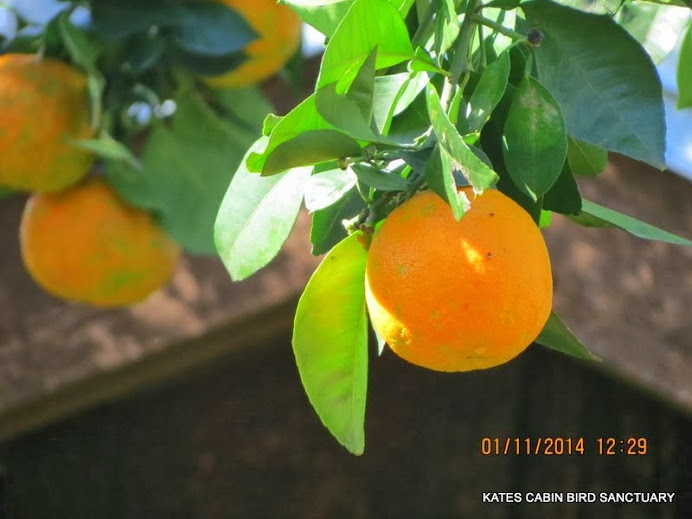
https://en.wikipedia.org/wiki/Tree
Tree
From Wikipedia, the free encyclopedia
In botany, a tree is a perennial plant with an elongated stem, or trunk, supporting leaves or branches.
In some usages, the definition of a tree may be narrower, including only woody plants, only plants that are usable as lumber or only plants above a specified height. At its broadest, trees include the taller palms, the tree ferns, bananas and bamboo.
A tree typically has many secondary branches supported clear of the ground by the trunk. This trunk typically contains woody tissue for strength, and vascular tissue to carry materials from one part of the tree to another. For most trees it is surrounded by a layer of bark which serves as a protective barrier. Below the ground, the roots branch and spread out widely; they serve to anchor the tree and extract moisture and nutrients from the soil. Above ground, the branches divide into smaller branches and shoots. The shoots typically bear leaves, which capture light energy and convert it into chemical energy byphotosynthesis, providing the food needed by the tree for its growth and development.
Flowers and fruit may also be present, but some trees such as conifers instead have pollen cones and seed cones, and others such as tree ferns produce spores instead.
Trees tend to be long-lived,[1] some reaching several thousand years old. The tallest known specimen on Earth is 115.6 m (379 ft) and they have a theoretical maximum height of 130 m (426 ft).[2] Trees have been in existence on the Earth for 370 million years. Trees are not a taxonomic group but are a number of plant species that have independently evolved a woody trunk and branches as a way to tower above other plants and make full use of the sunlight.
Trees play a significant role in reducing erosion and moderating the climate. They removecarbon dioxide from the atmosphere and store large quantities of carbon in their tissues. Trees and forests provide a habitat for many species of animals and plants. Tropical rainforests are one of the most biodiverse habitats in the world. Trees provide shade and shelter, timber for construction, fuel for cooking and heating, and fruit for food as well as having many other uses. In parts of the world, forests are shrinking as trees are cleared to increase the amount of land available for agriculture. Because of their longevity and usefulness, trees have always been revered and they play a role in many of the world'smythologies.
Definition
Although "tree" is a term of common parlance, there is no universally recognised precise definition what a tree is, neither botanically nor in common language.[3][4][5]
In its broadest sense, a tree is any plant with the general form of an elongated stem, or trunk, which supports the photosyntheticleaves or branches at some distance above the ground.[6][7] Trees are also typically defined by height,[8][9][10] with smaller plants being classified as shrubs,[11] however the minimum height which defines a tree varies widely, from 10 m to 0.5 m.[10] By these broadest definitions, large herbaceous plants such as papaya and bananas are trees, despite not being considered as trees under more rigorous definitions.[3][5][12][13][14][15]
Another criterion often added to the definition of a tree is that it has a woody trunk.[10][16][17] Such a definition excludes herbaceous trees such as bananas and papayas. Monocots such as bamboo and palms may be considered trees under such a definition.[18]Despite being herbaceous[19][20] and not undergoing secondary growth and never producing wood,[21][22][22][23] palms and bamboo may produce "pseudo-wood" by lignifying cells produced through primary growth.
Aside from structural definitions, trees are commonly defined by use. Trees may be defined as plants from which lumber can be produced.[5]
Overview
Trees are an evolutionary adaptation to competition for space. By growing taller trees are able to compete better for sunlight.[24] They have modified structures that allow them to grow much taller and spread out their foliage, such as thicker stems that are composed of specialized cells that add structural strength and durability. They are long-lived perennial plants that can increase their size each year by producing woody stems. They differ from shrubs, which are also woody plants, by usually growing larger and having a single main stem;[11] but the distinction between a small tree and a large shrub is not always clear,[25] made more confusing by the fact that trees may be reduced in size under harsher environmental conditions such as on mountains and subarctic areas. The tree form has evolved separately in unrelated classes of plants in response to similar environmental challenges, making it a classic example ofparallel evolution. With an estimated 100,000 species, the number of trees worldwide might total twenty-five percent of all living plantspecies.[26] Their greatest number grow in tropical regions and many of these areas have not yet been fully surveyed by botanists, making tree diversity and ranges poorly known.[27]
Trees exist in two different groups of vascular or higher plants, the gymnosperms and the angiosperms[clarification needed]. Both groups are seed plants. The gymnosperm trees include conifers, cycads, ginkgophytes and gnetales. Angiosperm trees are also known as broad-leaved trees. Most angiosperm trees are eudicots, the "true dicotyledons", so named because the seeds contain two cotyledons or seed leaves. A relatively smaller number of other angiosperm trees are paleodicots; these include Amborella,Magnolia, nutmeg, avocado, and others.
Wood gives structural strength to a tree stem which is used to support the plant as it grows larger. The vascular system of trees allows water, nutrients and other chemicals to be distributed around the plant, and without it trees would not be able to grow as large as they do. The three main parts of trees include the root, stem, and leaves; they are integral parts of the vascular system which interconnects all the living cells. In trees and other plants that develop wood, the vascular cambium allows the expansion of vascular tissue that produces woody growth. Because this growth ruptures the epidermis of the stem, woody plants also have a cork cambiumthat develops among the phloem. The cork cambium gives rise to thickened cork cells to protect the surface of the plant and reduce water loss. Both the production of wood and the production of cork are forms of secondary growth.
Trees are either evergreen, having foliage that persists and remains green throughout the year,[28] or deciduous, shedding their leaves at the end of the growing season and then having a dormant period without foliage.[29] Most conifers are evergreens but larches (Larixand Pseudolarix) are deciduous, dropping their needles each autumn, and some species of cypress (Glyptostrobus, Metasequoia andTaxodium) shed small leafy shoots annually in a process known as cladoptosis.[11] The crown is a name for the upper part[clarification needed] of a tree including the branches and leaves [30] and the uppermost layer in a forest, formed by the crowns of the trees, is known as the canopy.[31] A sapling is a young tree.[32]
Tree-like plants include some palms which are not trees but herbaceous[19][20] monocots that do not undergo secondary growth and never produce wood,[21][22][22][23] and hence do not meet the definition of tree used in this article. In many tree-like palms, the terminal bud on the main stem is the only one to develop so they have tall, unbranched trunks with spirally arranged large leaves. Some of the tree ferns, order Cyatheales, have tree-like growth forms, growing up to 20 metres (66 ft) but they are structurally very different from other trees: their trunks are composed of rhizomes which grow vertically and which are covered by numerous adventitious roots.[33]
Parts and function
Roots
The roots of a tree serve to anchor it to the ground and gather water and nutrients to transfer to all parts of the tree, and for reproduction defense, survival, energy storage and many other purposes. The first root produced by a newly germinated seedling is a taprootwhich goes straight downwards. Within a few weeks lateral roots branch out of the side of this and grow horizontally through the upper layers of the soil. In most trees, the tap root eventually withers away and the wide-spreading laterals remain. Near the tip of the finer roots are single cell root hairs. These are in immediate contact with the soil particles and can absorb water and nutrients such as potassium in solution. The roots require oxygen to respire and only a few species such as the mangrove and the pond cypress (Taxodium ascendens) can live in permanently waterlogged soil.[39]
In the soil, the roots encounter the hyphae of fungi. Many of these are known asmycorrhiza and form a mutualistic relationship with the tree roots. Some are specific to a single tree species, which will not flourish in the absence of its mycorrhizal associate. Others are generalists and associate with many species. The tree acquires minerals such as phosphorus from the fungus while it obtains the carbohydrate products of photosynthesis from the tree.[40] The hyphae of the fungus can link different trees and a network is formed, transferring nutrients from one place to another. The fungus promotes growth of the roots and helps protect the trees against predators and pathogens. It can also limit damage done to a tree by pollution as the fungus accumulate heavy metals within its tissues.[41] Fossil evidence shows that roots have been associated with mycorrhizal fungi since the early Paleozoic, four hundred million years ago, when the firstvascular plants colonised dry land.[42]
Some trees such as the alders (Alnus spp.) have a symbiotic relationship with Frankia sp,, a filamentous bacterium that can fix nitrogen from the air, converting it into ammonia. They have actinorhizal root nodules on their roots in which the bacteria live. This process enables the tree to live in low nitrogen habitats where they would otherwise be unable to thrive.[43] Researchers have discovered that certain plant hormones called cytokinins initiate root nodule formation and that this process is closely related to the mechanisms involved in mycorrhizal association. [44]
It has been demonstrated that some trees are interconnected through their root system, forming a colony. The interconnections are made by the inosculation process, a kind of natural grafting or welding of vegetal tissues. The tests to demonstrate this networking are performed injecting chemicals, sometimes radioactive, in a tree, and then checking for its presence in neighbor trees.[45]
The roots are, generally, a subterranean part of the tree, but some tree species have evolved roots that are aerial. The common purposes for aerial roots may be of two kinds, to contribute to the mechanical stability of the tree, and to obtain oxygen from air. An instances of mechanical stability enhancement is the red mangrove that develops prop roots that loop out of the trunk and branches and descend vertically into the mud.[46] A similar structure is developed by the Indian banyan.[47] Many large trees have buttress roots which flare out from the lower part of the trunk. These brace the tree rather like angle brackets and provide stability, reducing sway in high winds. They are particularly prevalent in tropical rainforests where the soil is poor and the roots are close to the surface.[48]
Some tree species have developed root extensions that pop out of soil, in order to get oxygen, when it is not available in the soil because of excess water. These root extensions are called pneumatophores, and are present, among others, in black mangroveand pond cypress.[46]
Trunk
The main purpose of the trunk is to raise the leaves above the ground in order to overtop other plants and shading them out. It also performs the task of transporting water and nutrients from the roots to the aerial parts of the tree and to distribute the food produced by the leaves to all other parts including the roots.[49]
In the case of Angiosperms and Gymnosperms, the outermost layer of the trunk is thebark and is mostly composed of dead cells. It provides a thick, waterproof covering to the living inner tissue. It protects the trunk against the elements, disease, animal attack and fire. It is perforated by a large number of fine breathing pores called lenticels through which oxygen diffuses. Bark is continually replaced by a living layer of cells called the cork cambium. The London plane (Platanus × acerifolia) periodically sheds its bark in large flakes. Similarly, the bark of the silver birch (Betula pendula) peels off in strips. As the tree's girth expands, newer layers of bark are larger in circumference, and the older layers develop fissures in many species. In some trees such as the pine (Pinus spp.,) the bark exudes sticky resin which deters attackers whereas in rubber trees (Hevea brasiliensis) it is a milky latex that oozes out. The quinine bark tree (Cinchona officinalis) contains bitter substances to make the bark unpalatable.[49] Tree-like plants[clarification needed] in thePteridophyta, Arecales, Cycadophyta and Poales such as the tree ferns, palms, cycads and bamboos have no true bark but all have an outer protective covering of some form.[50]
Although the bark functions as a protective barrier, it is itself attacked by boring insects such as beetles. These lay their eggs in crevices and the larvae chew their way through the cellulose tissues leaving a gallery of tunnels. This may allow fungal spores to gain admittance and attack the tree. Dutch elm disease is caused by a fungus (Ophiostoma sp.) carried from one elm tree to another by various beetles. The tree reacts to the growth of the fungus by blocking off the xylem tissue carrying sap upwards and the branch above, and eventually the whole tree, is deprived of nourishment and dies. In Britain in the 1990s, 25 million elm trees were killed by this disease.[51]
The innermost layer of bark is known as the phloem and this is involved in the transport of the sap containing the sugars made by photosynthesis to other parts of the tree. It is a soft spongy layer of living cells, some of which are arranged end to end to form tubes. These are supported by parenchyma cells which provide padding and include fibres for strengthening the tissue.[52] Inside the phloem is a layer of undifferentiated cells one cell thick called the vascular cambium layer. The cells are continually dividing, creating phloem cells on the outside and wood cells known as xylem on the inside.[53]
The newly created xylem is the sapwood. It is composed of water-conducting cells and associated cells which are often living, and is usually pale in colour. It transports water and minerals from the roots to the upper parts of the tree. The oldest, inner part of the sapwood is progressively converted into heartwood as new sapwood is formed at the cambium. The conductive cells of the heartwood are blocked in some species, and the surrounding cells are more often dead. Heartwood is usually darker in colour than the sapwood. It is the dense central core of the trunk giving it rigidity. Three quarters of the dry mass of the xylem is cellulose, a polysaccharide, and most of the remainder is lignin, a complex polymer. A transverse section through a tree trunk or a horizontal core will show concentric circles or lighter or darker wood - tree rings. These rings are the annual growth rings[54] There may also be rays running at right angles to growth rings. These are vascular rays which are thin sheets of living tissue permeating the wood.[55] Many older trees may become hollow but may still stand upright for many years.[56]
Buds and growth
Trees do not usually grow continuously throughout the year but mostly have spurts of active expansion followed by periods of rest. This pattern of growth is related to the climatic conditions, growth normally ceasing when conditions are either too cold or too dry. In readiness for the inactive period, trees form buds to protect the meristem, the zone of active growth. Before the period of dormancy, the last few leaves produced at the tip of a twig form scales. These are thick, small and closely wrapped and enclose the growing point in a waterproof sheath. Inside this bud there is a rudimentary stalk and neatly folded miniature leaves, ready to expand when the next growing season arrives. Buds also form in the axils of the leaves ready to produce new side shoots. A few trees, such as theeucalyptus, have "naked buds" with no protective scales and some conifers, such as theLawson's cypress, have no buds but instead have little pockets of meristem concealed among the scale-like leaves.[57]
When growing conditions improve, such as the arrival of warmer weather and the longer days associated with spring in temperate regions, growth starts again. The expanding shoot pushes its way out, shedding the scales in the process. These leave behind scars on the surface of the twig. The whole year's growth may take place in just a few weeks. The new stem is unlignified at first and may be green and downy. Palm trees[clarification needed] have their leaves spirally arranged on an unbranched trunk.[57] In some tree species in temperate climates, a second spurt of growth, a Lammas growthmay occur which is believed to be a strategy to compensate for loss of early foliage to insect predators.[58]
Primary growth is the elongation of the stems and roots. Secondary growth consists of a progressive thickening and strengthening of the tissues as the outer layer of the epidermis is converted into bark and the cambium layer creates new phloem and xylem cells. The bark is inelastic.[59] Sooner or later[which?]the growth of a tree slows down and stops and it gets no taller. As long as the crown remains in balance with the roots[clarification needed] the tree should remain healthy but its ability to defend itself against fungal attack is diminished. If damage occurs the tree may in time become hollow.[60]
Leaves
Main article: Leaf
Trees are much taller than herbaceous or shrubby plants[citation needed] and ensuring the upper-most leaves are supplied with water originating in the root system requires that water is drawn up through the xylem from the roots by the suction produced as it evaporates from the leaves.[clarification needed] If insufficient water is available the leaves will die.[61]
The leaves of trees come in a wide range of shapes and sizes which have evolved in response to environmental pressures including climate and predation. They can be broad or needle-like, simple or compound, lobed or entire, smooth or hairy, delicate or tough, deciduous or evergreen. The needles of coniferous trees are compact but are structurally similar to those of broad-leaved trees. They are adapted for life in environments where resources are low or water is scarce. Frozen ground may limit water availability and conifers are often found in colder places at higher altitudes and higher latitudes than broad leaved trees. In many cases, their branches hang down at an angle to the trunk which decreases the likelihood of them breaking when weighed down by snow.[clarification needed]Broad leaved trees in temperate regions have a different[clarification needed] strategy for dealing with winter weather. When the days get shorter and the temperature begins to decrease, the leaves no longer makes new chlorophyll and the red and yellow pigments already present in the blades become apparent.[62] Synthesis in the leaf of a plant hormone called auxin also ceases. This causes the cells at the junction of the petiole and the twig to weaken and sooner or later the joint breaks and the leaf floats to the ground. In tropical and subtropical regions, many trees keep their leaves all year round. Individual leaves may fall intermittently and be replaced by new growth but most leaves remain intact for some time. Other tropical species and those in arid regions may shed all their leaves annually at a particular time of year.[citation needed] Often this will coincide with the onset of the dry season or some other climatic event.[clarification needed] Many deciduous trees flower before the new leaves emerge.[63]
Reproduction
Main article: Plant reproduction
Tree forms are found in a wide range of plants and their reproductive strategies are substantially the same as shrub or herbaceous plant forms.
Many trees are wind pollinated which may be an evolutionary adaptation to take advantage of increased wind speeds high above the ground, particularly in the case of those that produce pollen before the leaves emerge.[64] A vast quantity of pollen is produced because of the low likelihood of any particular grain landing on an appropriate female flower. Wind-pollinated flowers of broad-leaved trees are characterised by a lack of showy parts, no scent and a copious production of pollen, often with separate male and female flowers, or separate male and female trees. The male flowers may be high up in the tree, often in the form of dangling catkins. The female flowers may be lower down the tree. The pollen ofpine trees contains air sacs which give it buoyancy and it has been known to travel as far as 800 kilometres (500 mi).[65] Tree pollen can cause allergies. A prime example would behay fever, which can be caused by pollen.[66]
Main article: Pollination syndrome
Seeds
Seeds are the primary way that trees reproduce and their seeds vary greatly in size and shape. Some of the largest seeds come from trees, but the largest tree, Sequoiadendron giganteum, produces one of the smallest tree seeds.[67] The great diversity in tree fruitsand seeds reflects the many different ways that tree species have evolved to disperse their offspring.
The single extant species of Ginkgophyta (Ginkgo biloba) has fleshy seeds produced at the ends of short branches on female trees,[68] and Gnetum, a tropical and subtropical group of gymnosperms produce seeds at the tip of a shoot axis.[69] The seeds of conifers, the largest group of Gymnosperms, are enclosed in a cone and most species have seeds that are light and papery that can be blown considerable distances once free from the cone.[70] Sometimes the seed remains in the cone for years waiting for a trigger event to liberate it. Fire stimulates release and germination of seeds of the jack pine, and also enriches the forest floor with wood ash and removes competing vegetation.[71] Similarly, a number of Angiosperms including Acacia cyclops and Acacia mangium have seeds that germinate better after exposure to high temperatures.[72]
Angiosperm tree produce seeds in a wide variety of fruits, some of them include acorn, nut, berrie, pome, drupe, samaras, hesperdium, capsule and legume.[73]
For a tree seeding to grow into an adult tree it needs light and space, if seeds only fell straight to the ground, competition among the concentrated saplings and the shade of the parent would likely prevent it from flourishing. Many seeds such as birch are small and have papery wings to aid dispersal by the wind. Ash trees and maples have larger seeds with blade shaped wings which spiral down to the ground when released. The kapok tree has cottony threads to catch the breeze.[74] The flame tree does not rely on fire but shoots its seeds through the air when the two sides of its long pods crack apart explosively on drying.[74] The miniature cone-like catkins of Alder trees produce seeds that contain small droplets of oil that help disperse the seeds on the surface of water.Mangroves often grow in water and some species have propagules, which are buoyant fruits with seeds that start germinating before becoming detached from the parent tree.[75][76] These float on the water and may become lodged on emerging mudbanks and successfully take root.[74] Other seeds, such as apple pips and plum stones, have fleshy receptacles and smaller fruits likehawthorns have seeds enclosed in edible tissue; birds and animals[clarification needed] eat the fruits and the seeds are either discarded or are consumed and pass through the gut to be deposited in the animal's droppings well away from the parent tree. In some cases, germination is improved by being processed in this way.[77] Nuts and other large seeds are gathered by animals that hide incaches[citation needed] any not immediately consumed.[78] Many of these caches are never revisited, the nut-casing softens with rain and frost and the seed germinates in the spring.[79] Pine cones may be hoarded in a similar way by red squirrels, and grizzly bearsraiding the caches may also help to disperse the seed.[80]
Red Oak:
Red Oak « Texas Trees Foundation
www.texastrees.org › ... › Texas Tree SpeciesRed Oak. Quercus shumardii. Comments: A desirable, large shade and ornamentaltree. Planted much more in recent years and is deserving of that attention.

Ayers Pear:

Pears in Texas: Old Favorites | HortUpdate - April 2010 | Aggie ...
aggie-horticulture.tamu.edu/newsletters/hortupdate/2010/apr/pears.htmlPears are are old favorites among Texas backyard fruit growers, and with the rise in popularity ... Ayers has been reported to be self-sterile, requiring a pollinator.


Callary Pear
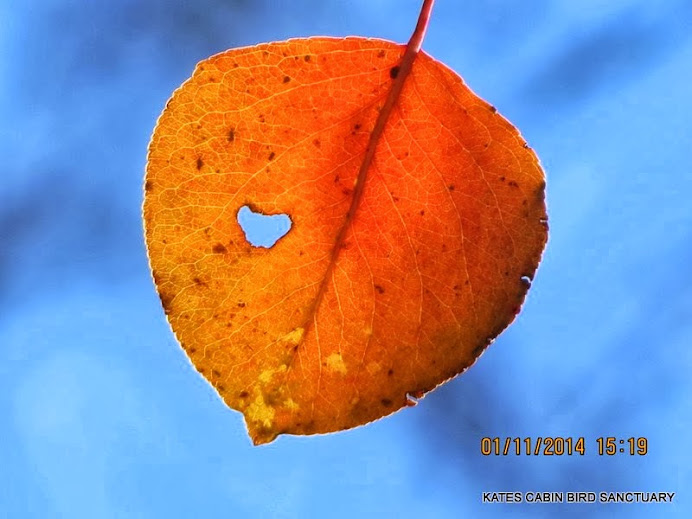
Pyrus calleryana - Wikipedia, the free encyclopedia
en.wikipedia.org/wiki/Pyrus_calleryana



Nutall Oak:

Quercus texana - Wikipedia, the free encyclopedia
en.wikipedia.org/wiki/Quercus_texanaQuercus texana, commonly known as Nuttall's Oak, is a fast growing large deciduous Oak tree native to North America from the lower Mississippi river valley ..

Link to photostudy in G+ Photo Albums:
https://plus.google.com/u/0/photos/117645114459863049265/albums/5968024409065989185
Red Maple with new buds:

Acer rubrum - Wikipedia, the free encyclopedia
en.wikipedia.org/wiki/Acer_rubrum

...this is brendasue signing off from Rainbow Creek. See You next time!

O+O

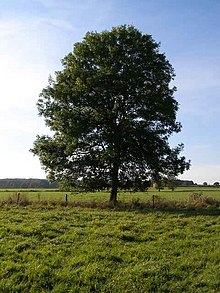

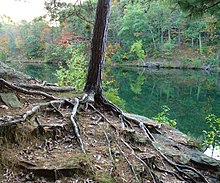
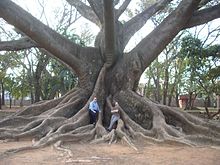








No comments:
Post a Comment
Hi Everybody! Please say hello and follow so I know you are here! Due to the inconsideration of people trying to put commercials on my blog comment area, I have restricted use of anonymous posts. Sorry that some hurt all.
My public email is katescabin@gmail.com No spammers or trolls